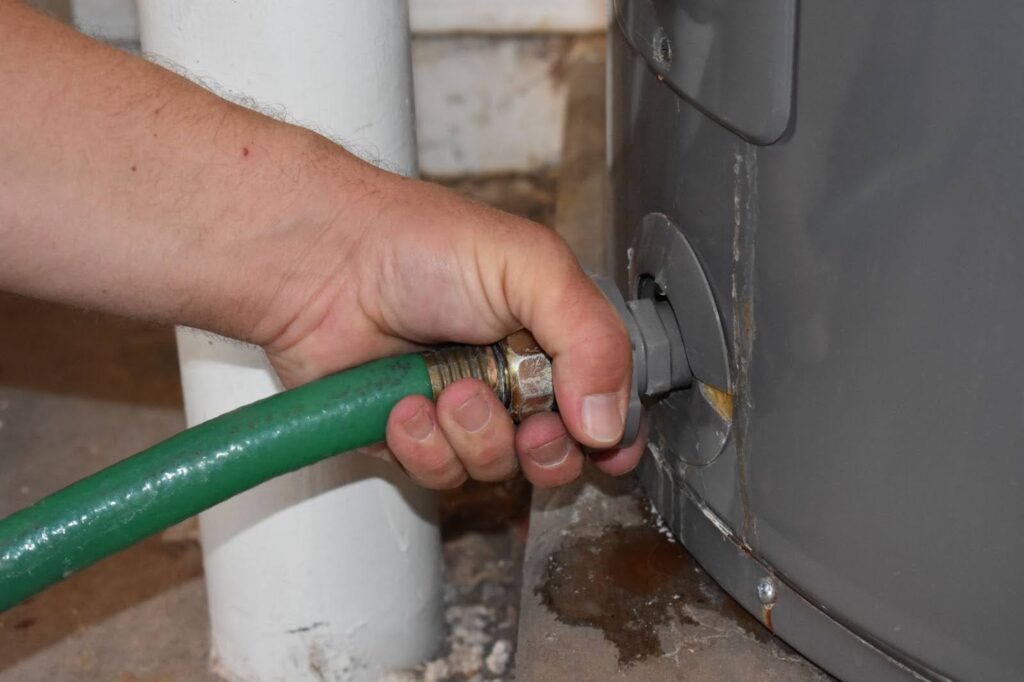Blog
How to Drain a Water Heater (Tank & Tankless)

Looking for clear instructions on how to drain a water heater? This guide covers both tank and tankless systems. Learn how to safely drain your water heater to remove sediment, improve efficiency, and extend your unit's lifespan. Follow these step-by-step instructions for proper water heater maintenance.
Time needed: 45-60 minutes
Tools needed:
- Garden hose
- Bucket
- Work gloves
- Safety glasses
Important Safety Notes Before Starting
Before attempting to drain your water heater, ensure you can complete the task safely. Turn off the power to the unit and allow the water to cool. If you're uncomfortable with any steps or notice leaks, contact a professional plumber immediately.
How to Drain a Standard Tank Water Heater
Follow these steps to drain your tank water heater:
-
Turn off the power
- For gas heaters: Turn the gas valve to "OFF"
- For electric heaters: Switch off power at the circuit breaker
-
Shut off the water supply
- Close the cold water inlet valve on top of the heater
- Open a hot water tap somewhere in your house near the heater
-
Connect your drain hose
- Attach a garden hose to the drain valve at the bottom of the tank
- Place the other end outside or in a floor drain
- Ensure the hose end is lower than the tank for proper drainage
-
Drain and flush the tank
- Open the drain valve and let the tank empty completely
- Once empty, briefly open the cold water inlet to flush the remaining sediment
- Continue until water runs clear
-
Complete the process
- Close the drain valve and remove the hose
- Close the hot water tap you opened earlier
- Open the cold water inlet valve to refill the tank
- Restore power once tank is full
Draining a Tankless Water Heater
Tankless units also need regular maintenance. Here's how to drain and flush a tankless system:
-
Shut off power and water
- Turn off the electricity or gas supply
- Close all three water valves (hot, cold, and main)
-
Access the flush valves
- Remove purge port valve caps carefully
- Keep rubber washers in place
- Connect drain hoses to purge ports
-
Clean the system
- Use 2.5 gallons of white vinegar (never chemical cleaners)
- Follow the manufacturer's specific flushing instructions
- The process typically takes 45 minutes
-
Restore service
- Close purge ports and remove hoses
- Replace valve caps securely
- Open water valves
- Restore power following manufacturer instructions
Water Heater Draining FAQ
How long does it take to drain a water heater?
About 20-30 minutes for a standard tank, 45 minutes for tankless units.
How often should you drain your water heater?
Most manufacturers recommend draining annually to prevent sediment buildup.
Do I need to turn off gas when draining water heater?
Yes, always turn off the power source (gas or electric) before starting.
When to Call a Professional
While draining a water heater is typically a DIY task, call a professional for water heater repairs if you:
- Notice leaks during the process
- Can't get water to drain properly
- Haven't maintained your heater in several years
- Feel uncomfortable with any steps
Maintenance Tips for Longer Water Heater Life
Annual draining helps prevent sediment buildup, but proper maintenance doesn't stop there. Regular temperature checks, pressure valve testing, and visual inspections help identify potential issues before they become problems.
Need help maintaining your water heater? Apollo Home's licensed plumbers provide expert water heater services for tank and tankless water heaters throughout Cincinnati. Contact us for maintenance, repairs, or installation.


